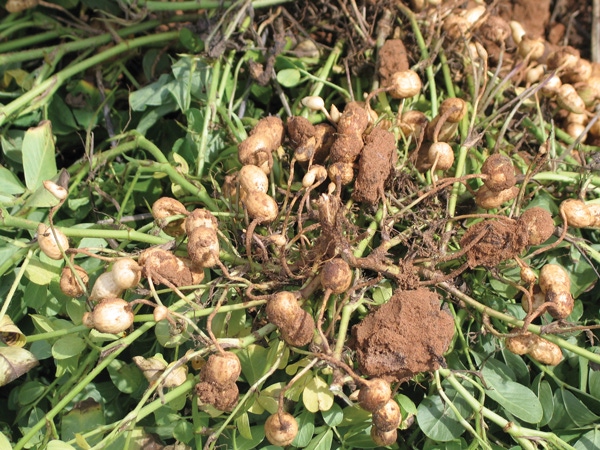
Cotton, corn and soybeans will continue to be driving forces behind the peanut market as farmers across the Peanut Belt weigh recent upticks in peanut contract offerings against what they can get from competing crops and as they compare production costs to make final plans for 2011 acreage.
Cotton at $2 a pound helped push spring peanut contract offerings higher, said Tyron Spearman, editor, Peanut Market News and chairman of the American Peanut Council during a market outlook session at the recent Oklahoma Peanut Expo in Lone Wolf, Okla.
Spearman said acreage for 2011 likely will decline by 14 percent nationwide. “Georgia acreage could be down 20 percent,” he said. “We hope to see an increase in Oklahoma. We need good quality peanuts.”
Spearman said 2010 production problems in the Southeast may have been a catalyst to push up contract offerings, which are slightly higher for the Southwest.
“As much as 30 percent of the total volume of the 2010 Southeast peanut crop could be lost,” Spearman said. That’s mostly because of aflatoxin, but drought also was a factor. He said a burrowing bug also hurt the crop, “mainly in strip till and no-till fields.”
He said the pest caused problems mostly in Central Georgia. Damaged peanuts went into segregation 2 status, he said.
That combination of factors means “we’re losing a lot of the 2010 crop.” The Southeast region produces 70 percent of the nation’s peanuts. Losing as much as 30 percent of that crop could push up prices for high quality Southwest peanuts, he said.
Even with the production problems, Spearman said “peanuts are in a surplus position. We have too many peanuts in the pipeline.”
He said the need to secure acreage against a backdrop of surplus “puts shellers in a peculiar position.”
Fortunately, peanut consumption is also up and improving. “Demand is strong. The declining dollar helps exports but domestic consumption also continues to improve. Spearman said peanut butter use has increased 8 percent the past two years.
Part of that increase could be linked to a weak economy and families looking to peanut butter as an economical source of protein. But as the economy improves, growth continues.
Peanut candy consumption was up 1.6 percent in 2010 and is up 21 percent over the past six months, 45 percent in January. “Peanut is the cheapest ingredient in candy,” Spearman said. “We’re also seeing new uses with new energy bars being promoted by market leaders such as Planters and others.”
He said peanut snacks were down 12.4 percent last year but have rebounded the last 6 months and are up 16.5 percent. “Again, peanuts are the most inexpensive ingredient and the most nutritional.”
Export market
He said exports were down by 17.5 percent in 2010 but are up 12.2 percent in 2011. “The strength of the dollar is a factor,” he said. The 2010 export market was $341 million. Canada, Mexico, Europe and Japan are key customers for U.S. peanuts.
Aiding U.S. export projections is China’s decision to keep more peanuts in country. “China will be a net importer,” Spearman said. “Recently, if China offered peanuts for export they were at a high price.”
Argentina is the primary competitor in the peanut export market.
Spearman said efforts are underway to convince the U.S. government to increase purchase of peanuts for school lunch and other programs. “We’re also trying to get more peanut butter into food banks.”
A new product, Plumpy Nut, uses peanut butter as a key ingredient to help severe and moderate nutrition problems in Haiti, Malawi and possibly West Africa. “Plumpy Nut saves lives,” Spearman said.
He said efforts to deal with peanut allergy includes from $3 million to $4 million in research funds to identify the “root causes.”
He said the peanut industry is cooperating with the Food and Drug Administration to assure safe peanut products following recent contamination issues.
“Peanuts are now checked intensively,” Spearman said. “We have competed a ‘kill step’ study” to show that proper management practices will eliminate pathogens. He said the problem in a Georgia facility several years ago was a sanitation issue instead of contaminated peanuts.
Spearman said some factors favor peanuts over other crop options this spring. “Fertilizer costs favor peanuts. Problems with resistant pigweed in other crops also favor peanuts,” he said.
Contract fulfillment obligations also favor peanut over other crop options. For peanut contracts, farmers do not have to deliver.
About the Author(s)
You May Also Like






